As Samuel Hemming, the first Senior Grand Warden of the United Grand Lodge of England once put it;
Freemasonry is a system of morality, veiled in allegory and illustrated by symbols.
Today, we’re taking a closer look at the most recognized masonic symbols (32, to be exact) and give you an explanation of what they mean and represent.
NB: Freemason symbols are subject to individual interpretation by each Mason, making their meanings diverse and personal. This variability is a key characteristic of Freemasonry, adding to its uniqueness and complexity. Thus, understandings of these symbols represent personal viewpoints rather than universally agreed-upon meanings.
This will be a very long read, but if you’re looking to know more about a certain specific Masonic symbol, you can use the table of contents provided below to find what you’re looking for with a click of a button.
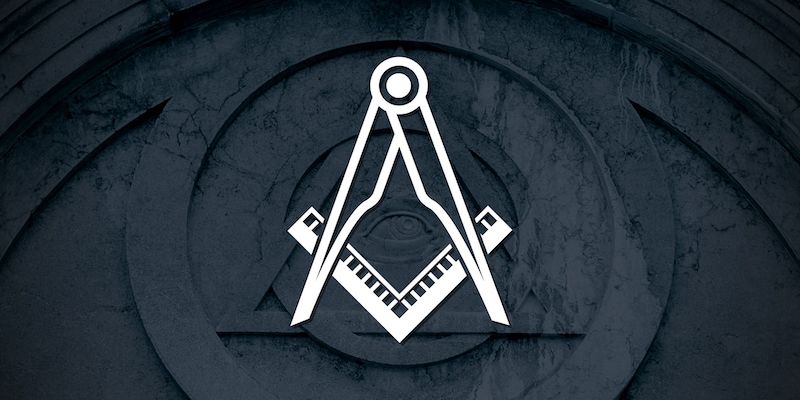
Acacia
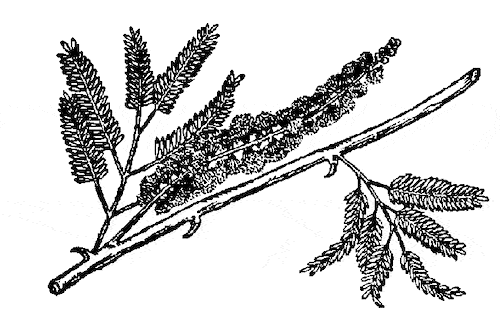
In Hebrew scriptures, Acacia is a sacred wood known as ‘shittah.’ In the Old Testament, it was severely used to make sacred furniture. The Ark of the Covenant and the Tabernacle were all made from Acacia.
In Freemasonry, it is a symbol of the immortality of the soul.
‘This evergreen is an emblem of our faith in the immortality of the soul. By this, we are reminded that we have an immortal part within us, which shall survive the grave, and which shall never, never, never die.’
This statement is used during Masonic funeral rites.
Its meaning is derived from the evergreen and durability nature of the tree. The immortality of the soul is an unprovable fact; therefore, masons are required to take it by faith.
The sprig of Acacia is also a symbol of innocence and purity in Freemasonry. In Greek, the tree signifies the moral quality of the innocence of life.
In his theory of Christianizing Masonry, Hutchison explains the interpretation as:
‘We masons, describing the deplorable estate of religion under the Jewish law, speak in figures…akakia being the greek word for innocence, or being free from sin; implying that the sins and corruption of the old law, and devotees of the Jewish Altar…’
It is further interpreted as a symbol of initiation. It is incorporated in the craft’s initiation ceremonies to represent the symbol of resurrection to a future life.
All Seeing Eye
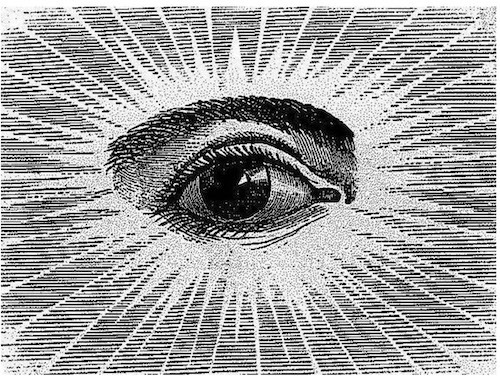
It is also known as the Eye of Providence or the Masonic Eye.
In Freemasonry, the All-Seeing Eye is a symbol used to remind members that the Great Architect of the Universe (God) is observing all deeds, actions, and human thoughts.
The symbol first appeared as a Masonic icon in 1797 in the publication of the Freemason’s Monitor or Illustrations of Masonry by Thomas Smith Webb.
The Square and Compasses

The Square and Compasses are one of the most recognized Freemasonry symbols.
Its origin is traceable back to the Middle Ages from the stonemasons guild.
The square in Masonry symbolizes morality in the essence of the Golden Rule.
To deal with someone squarely refers to treating a person the way we want to be treated.
It indicates Masons’ ability to apply the teachings of conscience and morality in testing the rightness of their actions.
The compass stands for the ability to mark a clear boundary around our desires and passion.
It represents self-restraint and control, which is the basis of morality and wisdom.
The Square and Compasses combined serve as a reminder to Freemasons to explore personal desires and passions while maintaining morality.
The Letter G
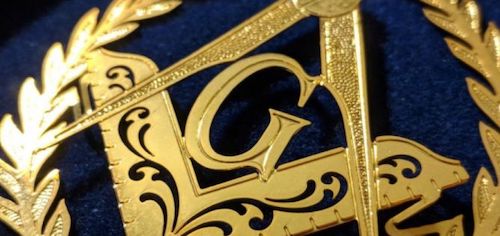
The letter G appears inside the Square and Compasses and (sometimes) at the center of the Blazing Masonic star.
Its symbolism in Freemasonry often differs from one jurisdiction to another.
Some say it refers to ‘God’, i.e, the Supreme Being.
Others articulate its meaning to ‘Geometry’; the study of the order of numbers in mathematics and sciences in general.
Other lodges believe it stands for ‘Gnosis’; the understanding of spiritual mysteries which is a central part of the craft.
Some Masons link the meaning of the letter G to Hebrew. In ancient Hebrew, the letter G had a similar numeric value of 3.
In history, number 3 was used severally when referring to God and his teachings.
Cable Tow
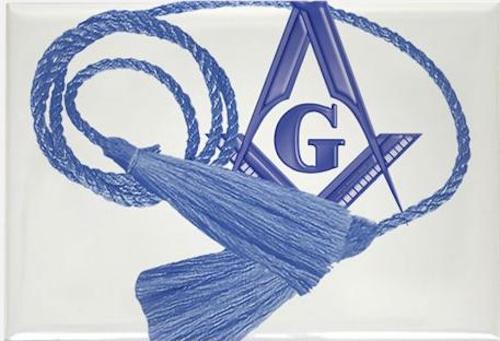
A cable tow is usually attached to a Mason’s robe. In the ancient days, cable was a strong rope used to tie together with heavy objects on a raft.
A tow was also a rope used for pulling objects. A cable tow, therefore, was a robust heavy rope used for binding and pulling objects.
In Freemasonry, the cable tow is a visible symbol of a person’s pledge to the craft.
It represents a vow that a Mason will fulfill his duties and help a fellow brother to his full capability. The length of the cable tow indicates the extent to which a member is willing to go to assist a fellow Mason.
That’s why the length of a cable tow is significant in Freemasonry.
The cable tow can be related to the cord that unites a mother and child during birth.
After a child is delivered, the physical bond between them is cut and replaced with unconditional love.
During initiation, the cable-tow is removed from the recruit because the vow taken on the altar is stronger than a visible tie. It becomes a moral constraint bounding a person to brotherly love in the craft.
The bond becomes a two-way traffic where a person is linked to a Freemason, and a Freemason is bound to the person.
Masonic Blazing Star
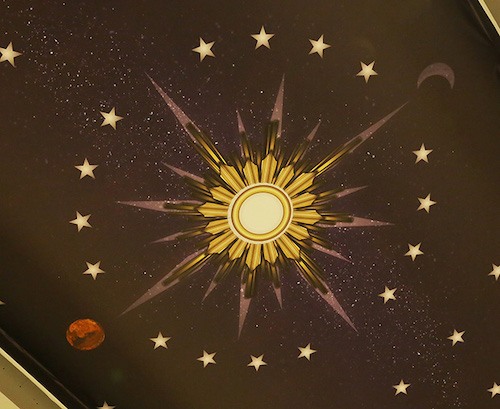
The Masonic Blazing star is said to represent the peak of a person’s Masonic Journey. Its symbolism in the craft has more than one meaning.
First, the masonic blazing star represents God, the Highest Being who shines his light upon us, making us better people in society.
It also reminds Masons of God’s omnipresent nature, indicating that He is with us regardless of where we are.
Second, the masonic blazing star represents the sun, which casts its rays upon the earth giving everything life. Some ancient religions worshipped the sun.
Third, it represents the star of Bethlehem, which guided the three wise men to baby Jesus. In a Freemason Lodge, the Masonic Blazing Star leads members on a spiritual path to meet the Supreme Being.
Fourth, it stands for prudence. The quality of being wise. Prudence guides Masons in living a life full of wisdom.
Masonic Gavel
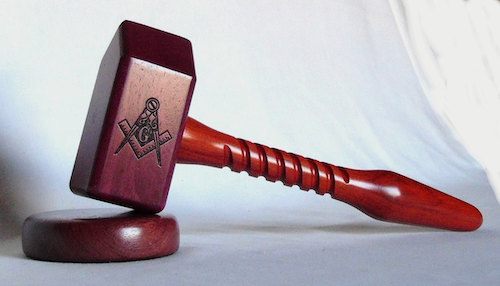
The Masonic gavel has two distinctive meanings. In the Stonemasons era, a gavel was used in shaping stones. Similarly, in Freemasonry, it serves as a speculative reminder for members to remain morally pure and separate themselves from societal vices.
Masons are viewed as living stones that can be shaped by breaking rough edges to live a life pleasing to our creator.
When used by a Master of a Lodge, the Masonic Gavel is a figure of authority.
He uses it to manifest his power in the lodge through his actions. Through this, he can maintain order in proceedings.
Some lodges also in the United States have a travel gavel program used to promote visitation to other lodges as a unit. It promotes social interactions between lodges.
Masonic Lambskin Apron
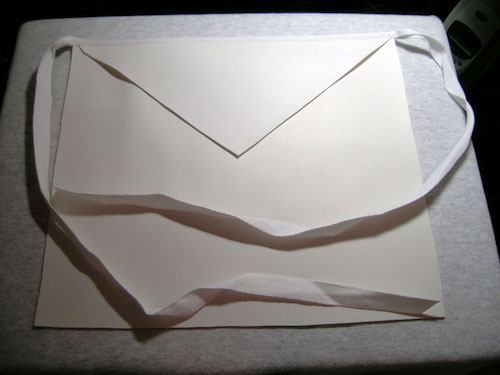
The Masonic Lambskin Apron, a significant symbol in Freemasonry, embodies innocence, purity, and a commitment to the Masonic ideals.
Made from white lambskin, it signifies a new member’s entrance into the brotherhood and serves as a reminder of their dedication to living a virtuous and honorable life.
This apron, worn during Masonic ceremonies, symbolizes the wearer’s ongoing journey towards personal and ethical improvement.
It’s a visual representation of a Mason’s promise to uphold the core values of brotherhood, charity, and truth throughout their life.
Anchor and The Ark
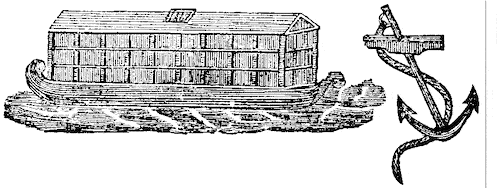
The Anchor and the Ark in Freemasonry are a symbol of hope and peace against life challenges.
The symbol was discovered in catacombs in Rome. It is believed that the person who lived in the tomb rested in a peaceful place.
Using an anchor to represent hope is said to originate from Apostle Paul in the book of Hebrews.
Hebrews 6:19; ‘Which hope we have as an anchor of the soul, both sure and steadfast, and entereth into that within the veil.’
At the time, Christians were facing a lot of challenges and prosecution. Those who managed to make it to the end were grateful. The anchor gave them hope to keep on going despite the challenges faced. That’s why it was carved in their tombs.
The ark, which was a ship in the bible, represents the journey of life.
According to the Masonic third degree, the two symbols combined offer reassurance to Masons that the Divine Ark will surpass stormy weather and bring them to a place of rest free from worldly wickedness.
Ark of Covenant

In the Bible, the Ark of the Covenant was constructed by Moses following command from God. It was made from shittim wood (acacia), had four golden rings attached to the four corners, and two golden cherubim sat on the top.
It housed the two stone tablets containing the Ten Commandments, a pot of manna, and Aaron’s rod.
The Ark was later used as a symbol of God’s promise to David and housed in Solomon’s Temple.
Freemasonry’s meaning of the Ark of Covenant is derived from biblical times. It is a universal symbol in the fraternity featured in numerous artworks. The Ark represents God’s unending forgiveness to human sins.
Masonic lodges are perceived as modern-day Solomon Temples. In the lodges, members are taught the importance of abiding by God’s commandments.
Therefore the Ark also reminds Masons that even though they are doing good by the fraternity teachings, heeding to God’s ten commandments will help them do better.
Masonic Shoe
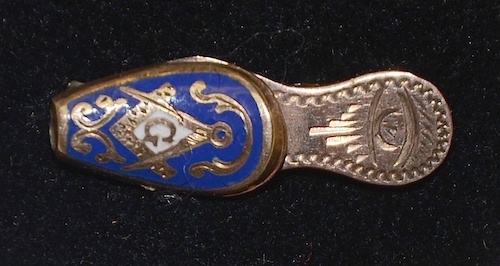
The Masonic Blue Slipper is a symbolic emblem in Freemasonry, representing the importance of faithfulness and remembrance.
This emblem, often depicted as a simple blue slipper or shoe, is a reminder to Masons of their duty to be faithful to their loved ones, especially their spouses or partners.
It is derived from the Biblical story of Ruth, where a shoe was used as a symbol of a pledge or commitment.
In Masonic tradition, the Blue Slipper symbolizes the vow to always be true and supportive, ensuring that the welfare and honor of family and fellow Masons are upheld with unwavering loyalty and respect.
The Beehive
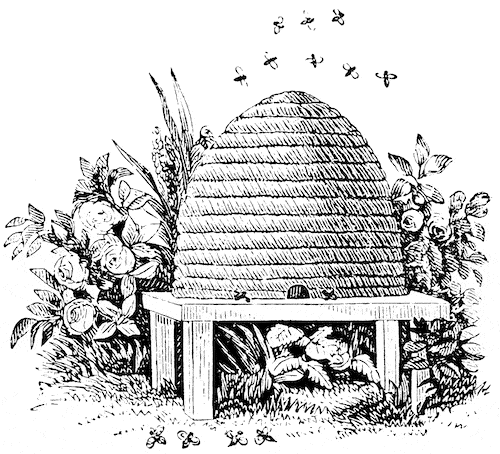
A beehive consists of a group of insects tirelessly working together to achieve a common goal.
Similarly, the beehive in Freemasonry represents the importance of Masons coming together and mobilizing all efforts for one purpose.
The concept behind the hive is to gather people with similar interests who can cooperate.
The beehive also symbolizes a form of work known as industry and the craft’s different work types.
In Freemasonry, work is vital.
This virtue is taught by a Master Mason’s instructions;
‘Works that he may receive wages, the better to support himself and family, and contribute to the relief of a worthy, distressed brother, his widow and orphans.’
Coffins
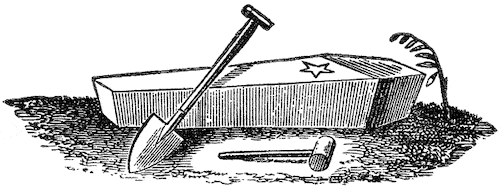
Generally, coffins are associated with death.
In Freemason, a coffin is displayed next to a sprig of acacia, and occasionally, there will be a five-pointed star carved on the top side.
The meaning attached to the coffin varies from one context to another.
It symbolizes the death of a Mason’s previous life, which is necessary before a person starts engaging in Masonic duties.
Masonic Sheaf of Corn
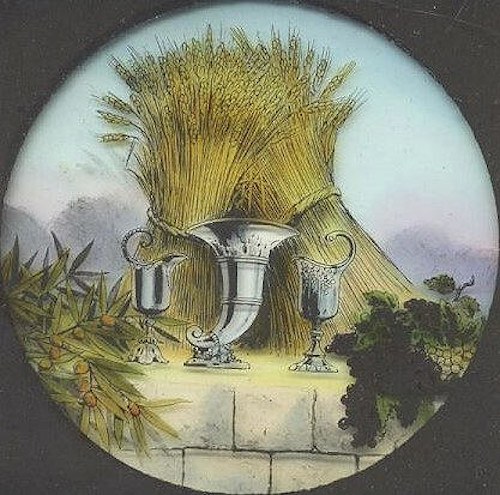
During King Solomon’s times, laborers paid their wages (taxes) using corn. Ancient Master Masons received a sheaf of corn, wine, and oil as payment, which is currently paid in dollars.
In Freemasonry, the Sheaf of Corn symbolizes the benefits of our sweat and the rewards earned by those before us, and the importance of partaking in charitable activities.
The symbol reminds masons of the hard work put in by their former brothers. After a successful harvest, the leftovers in the field were left for widows and orphans.
Similarly to corn leftovers left for the unfortunate, Masons are required to participate in charitable activities that benefit the underprivileged in our society.
47th Problem of Euclid
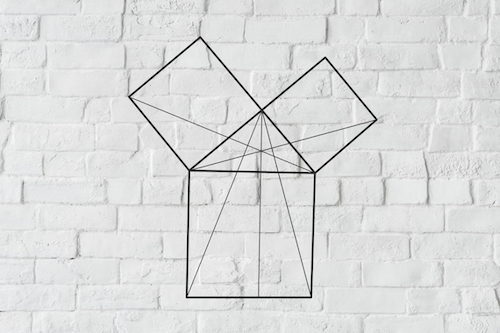
The 47th Problem of Euclid is also known as the 47th Proposition of Euclid or the Pythagorean Theorem.
The name originated from Euclid, famously recognized as the father of geometry.
The mathematical representation of the symbol is in the ratio 3:4:5.
In Speculative Freemasonry, the 47th Problem of Euclid stands for Masons’ importance to ‘square their square.’
In other words, members of the craft are required to align their lives in order. Operative Freemasons used the symbol to lay out strong foundations in construction.
Masonic Pavement
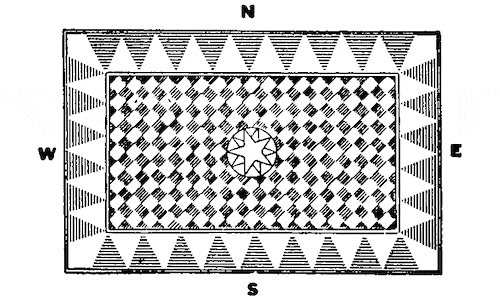
The Masonic pavement is one of the most recognized symbols of the fraternity.
The floor of Masonic lodges is made of mosaic pavements; various stones joined together to form a pattern in the form of a painting.
It is said that King Solomon’s temple flooring incorporated black and white mosaic pavements.
Mosaic pavement designs in freemasonry can be traced to the 18th century. At the time, most lodge furniture was made from these. The pavement symbolizes a bond uniting all members.
According to French Masons, the mosaic pavement educates members that they were once part of a Fraternity that bound people together; hence the pre-existing bonds should be maintained and strengthened.
It is also a symbol of care and providence. Masons are taught that it’s a pillar of comfort and blessings, which shows members the importance of relying on the Divine Providence of God.
Trestle-Board
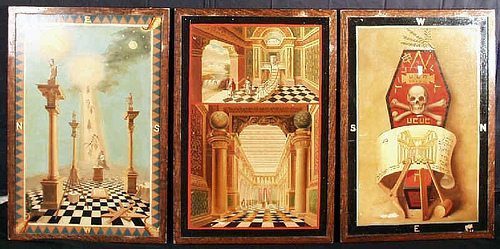
In some Masonic jurisdictions, trestle boards are referred to as tracing boards.
Some Masons, however, reject the notion that the two are similar.
A trestle board is a typical framework made of three vertical, horizontal, and slanted crosspieces.
Trestle boards are designed for a master workman to outline their plans of what needs to be done. It is similar to a blueprint.
Operative masons used trestle boards purely to lay down the plans of a building before executing it.
When Freemasons evolved from being operative (stone) masons, the trestle board remained as a Masonic symbol in the speculative realm.
Today, it represents an ideal. It refers to the plan a Mason has for his life.
Also, it stands for a blueprint to improve current conditions. For example, Masons believe that enlightenment can pull people out of the miserable conditions they are facing.
Two-Headed Eagle
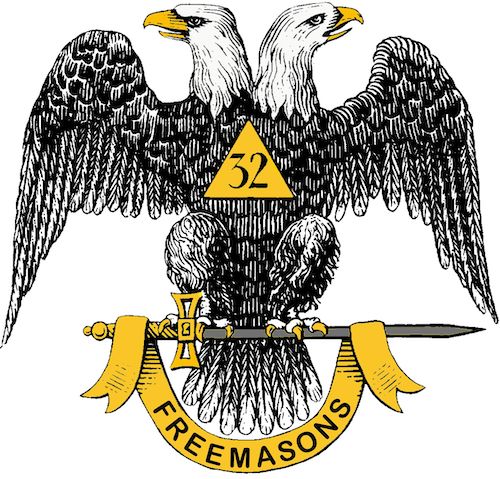
The Two-Headed eagle is theorized to originate from Ancient Mesopotamia.
It was a representation of polysepalous (multi-headed) beasts that were spoken of in legends and myths.
Over the years, the symbol was continuously used in flags, engraved in metallic work, garment embroidery, and many other places.
It was first used as a Freemasonry symbol in 1759. At the time, it delineated two bodies merging into one. The Two-headed Masonic eagle is also known as the ‘Eagle of Lagash.’
The name originated from the oldest symbol in the ancient Sumerian city of Lagash.
In Freemasonry, the double-headed eagle is a symbol of the thirty-third degree of the Scottish Rite.
It is used as a symbol of a completed alchemical process. In alchemy, the eagle represents purified sulfur and portrays a rising spirit. It stands for the reconciliation between matter and spirit.
Two Masonic Pillars
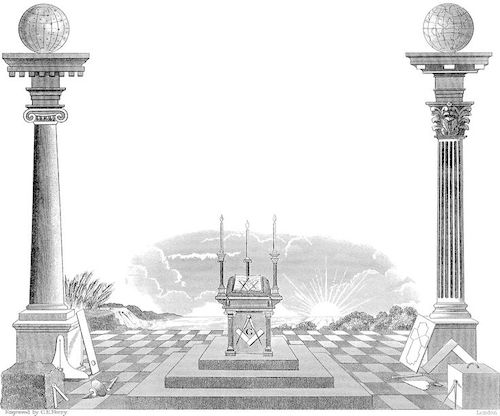
These two pillars are constructed at the entrance of Masonic lodges. In the Bible, two pillars known as Boaz and Jachin stood at the porch of Solomon’s Temple.
Boaz was the left-hand pillar which meant ‘In Him is Strength,’ and the right-hand pillar Jakin means ‘ He Establishes.’
In Freemasonry, the two pillars symbolize opposite pairs. W.L Wilmuhurst described opposites as, ‘good and evil; light and darkness; active and passive; positive and negative; yes and no; outside and inside; man and woman…’
Masons are taught how to create a balance between their own thoughts and external actions. Brother C.W Leadbeater states that;
‘ In the harmonious working of these two laws, a man may attain stability and strength required to reach the circle within which a Master Mason cannot err.’
It also represents life and death, which are total opposites. Masons believe that death is a necessity to extinguish that which is old and withering. This creates room for germinating young ideas and principles.
The Moon

During the 18th Century, some lodges met during full moon nights since, at the time, there was no street lighting.
Members were dependent on the light emitted from full moons to find their way back home.
Freemasonry highlights the moon as a less powerful source of light. The light from the East side of the moon is devoted to the Master of a Lodge.
The moon’s symbolic nature is used as a reminder of the rituals, alchemical rebirth, and Newtonian training in Freemasonry.
Its astrological symbolism, however, leans more towards alchemical rebirth. Alchemy refers to the process of purifying substances.
Educating a person as they move up from one degree to another perfects him making him a better Mason.
The Masonic Trowel
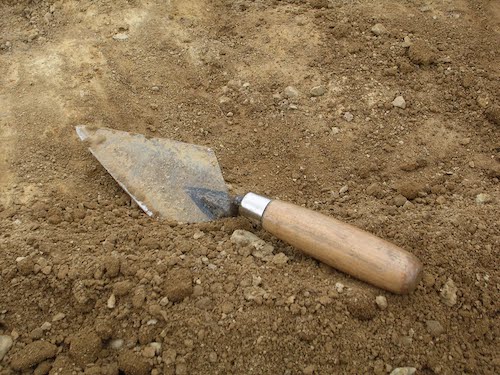
Stonemasons used trowels during construction to spread cement on bricks or stones.
Freemasons use the trowel as a symbol of Master Workman. Similar to construction, the trowel is symbolically used to spread brotherly love within the craft.
The person spreading love is a figurative trowel, while the affection being spread represents cement.
Masonic brotherly love refers to the resilience a person has built by restricting personal desires and passions to disseminate peace and harmony to the people around him. The love is not limited to fellow Masons.
Instead, it is to be shared with anyone a Mason interacts with.
King Solomon’s Temple
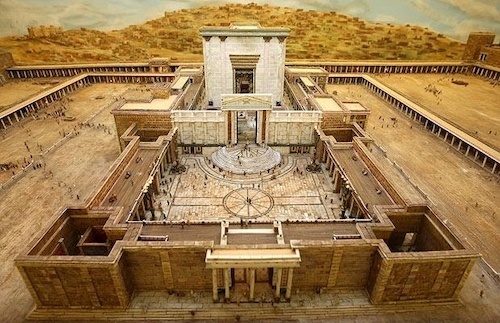
King Solomon’s temple is significant in Freemasonry. It is one of the most prominent structures constructed in Biblical times.
Freemasonry traces its origin as an institution of the temple. According to ancient theories such as The Legend of the Craft speculate that Solomon initially concocted the fraternity.
It was conceived as a secret society during the construction of the temple on Mount Moriah.
Therefore the temple is a symbol of origin to Freemasons. Today, masonic lodges are perceived as modern-day King Solomon Temples.
The two pillars erected in a lodge’s entrance are similar to the pillars at the ancient temple. The layout of the lodge represents a stone yard or temple building in different construction stages.
The first three degrees of the Freemasonry revolve around the craft.
However, actual evidence linking the theories to real occurrences is non-existent.
The Masonic HourGlass
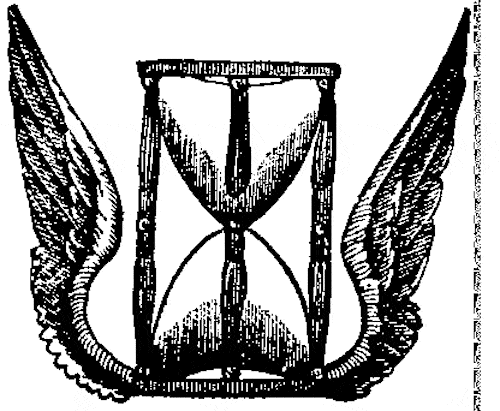
An HourGlass in Freemason holds more than one meaning.
It is used to represent multiple concepts. However, it symbolizes two significant allusions; time and death.
The hourglass indicates that time is moving forward, and nothing can reverse the movement of the sand.
Masons are taught that everyone is equal regardless of the position one holds in life because riches and high social status cannot move the sand in backward. Therefore, we are all on the same level in life.
The title page of Nicholas Stone; Mason to King James I and Charles I; has a note saying:
‘In time take time while time doth last
For time is no time, wheel time is past.’
The note emphasizes the importance of utilizing time now before it’s gone.
The scythe sometimes symbolizes death in the hourglass. Death cuts short life and leads us to eternity.
It shows that even though we manage to conquer evils from childhood to adulthood, eventually, time will catch up, and we will have to leave the world behind.
Death is inevitable to all human beings, whether rich or poor.
The Scythe
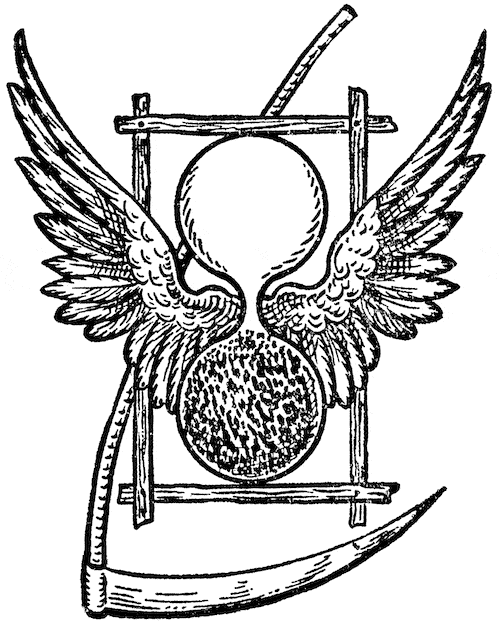
The scythe is sometimes embedded in the hourglass. The hourglass and the scythe are perceived as a conjoined symbol by some Masons.
During the olden days, a scythe was a standard tool used in cutting grass and reaping crops.
In Europe and Asia, the scythe is perceived to represent the Angel of Death or Grim Reaper.
In Freemasonry, a scythe is an emblem of time in the destruction of humankind’s institutions. It symbolizes the end of our time on earth.
Masons are taught that since we don’t know the exact time of death, it is essential to utilize the time God has given to mold ourselves into better people.
The scythe also stands for immortality. Freemasons believe in immortality.
Earthly bodies are temporary vessels that will eventually perish, but our souls will forever live.
Therefore as per the craft’s teachings, death reconnects a person to fellow Freemasons who met death before him.
The Twenty-Four Inch Gauge

Operative masons used the twenty-four-inch gauge to measure their work. Today, the instrument symbolizes the twenty-four hours in a day. The hours are further divided into three equal parts encompassing eight hours each.
Freemasons are taught to allocate one-third for engaging in work, the second third to serving God and people in society, and the final third to sleeping and refreshing.
In some lodges, the twenty-four-inch gauge is visibly divided into three different segments.
The Level
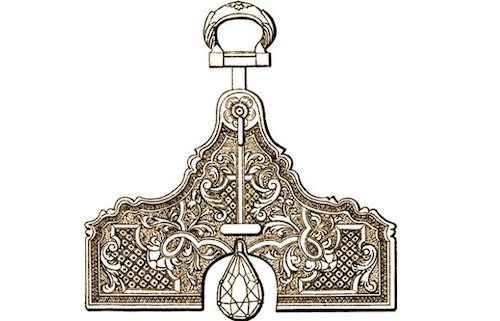
The level is a common symbol in Freemasonry. A section of the Freemasonry Tracing Board says;
‘The Jewels of the lodge are the three movable and three immovable. The three movable jewels are the square, the level and the plumb rule. Among operative masons…the level is to lay levels and prove horizontals…Among Free and Accepted Masons…the level equality.’
The level symbolizes equality. Masons are taught that we all come from the same place, are working towards similar goals, and share the same hope.
Also, Freemasonry recognizes that even though men cannot possess similar abilities and gifts, everyone deserves to be given equal respect and similar opportunities.
The Senior Warden of a Lodge wears the symbol of the level. The tool reminds the Senior Warden of the importance of treating all members equally.
The Masonic Keystone
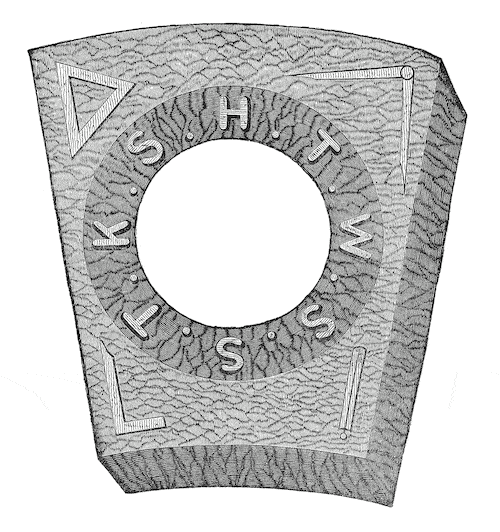
The Masonic Keystone has eight letters engraved; HTWSSTKS, which stands for ‘Hiram The Widow’s Son Sent To King Solomon”.
Third-degree masons study the legend of a person called Hiram Abiff, also known as the widow’s son.
Legends narrate that Hiram was the chief architect in constructing the Temple of Solomon. He was mercilessly killed for failing to surrender the secret Masonic passwords. Mason, therefore, holds him as a symbol of loyalty.
His story emphasizes the importance of keeping the craft’s secret dearly.
The letters HTWSSTKS are carved on the grave headstones of Royal Arch masons who surpassed the third-degree level.
Point Within a Circle
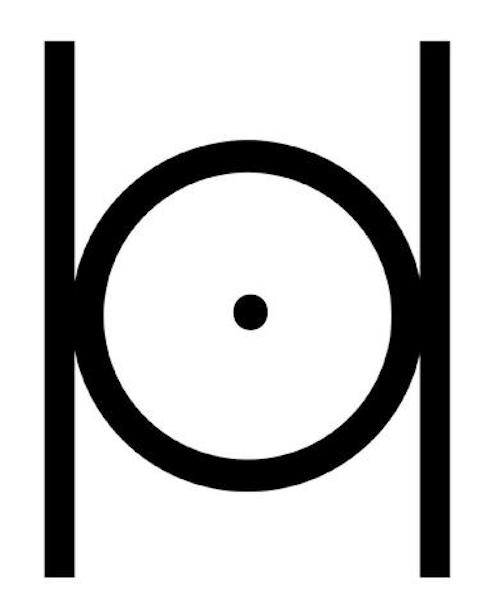
Some delineations of the symbol have letter B on the right side and E on the left.
The Point within a circle in Freemasonry is linked to St. John the Baptist (B) and St. John the Evangelist (E). The two are essential Masonic saints.
In Freemasonry, the Point, black dot in the middle of the circle symbolizes an individual mason.
The circumscribed circle stands for the boundary between a brother’s obligation to God and men. A Mason should be restricted within the circle.
He shouldn’t let personal desires, passion, interests, or anything else lead him astray.
The Broken Column
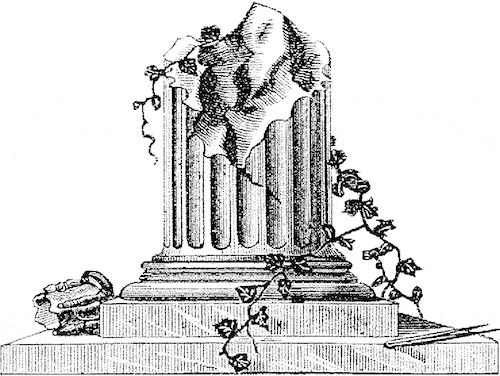
The broken column in Freemasonry represents the demise of Hiram Abif and the incomplete work of the Temple of Solomon.
The statue consists of a virgin weeping in front of a broken column.
On one hand, she is holding a sprig of acacia (yet another Freemasonic symbol), and an urn on the other.
The symbol teaches third-degree masons moral lessons on living virtual and upright lives.
It answers inquiries on eternal life and faith. It also serves as a safety assurance.
The Masonic Pencil
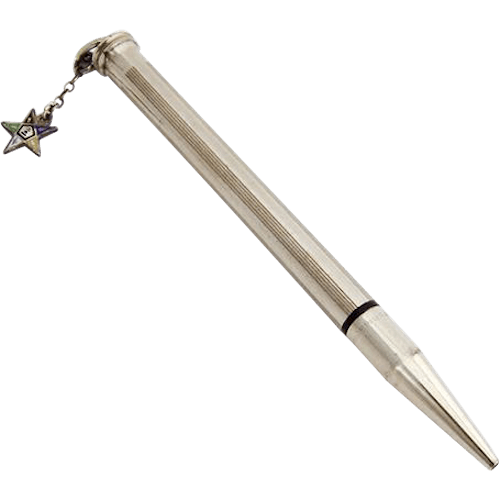
Stonemasons used pencils to sketch and mark layouts during construction. The lead mason envisions the building on a draft and the blueprint guides worker masons.
Today, speculative masons do not draw a symbolic meaning from the tool.
In Freemasonry, God is the artist, and we are the workmen. The pencil serves as a reminder that God notes all actions down, and on judgment day, we will be judged according to our doings.
The Number 7
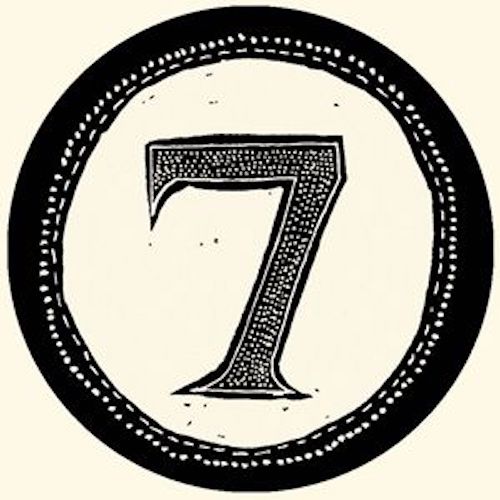
The number seven is sacred in the bible. Historical biblical recurrences are denoted by the number 7.
For instance, Solomon built the Temple for seven years. In Freemasonry, seven is linked to Pythagoras.
Pythagoreans depicted seven as a perfect number because it is a summation of three and four, which symbolically represents a triangle and a square. It is considered a perfect number that indicates completion.
This explains why seven members are required to make an ideal lodge; three principal officers (Master Masons), two fellows of the craft, and two entered apprentices.
Rough and Perfect Ashlar
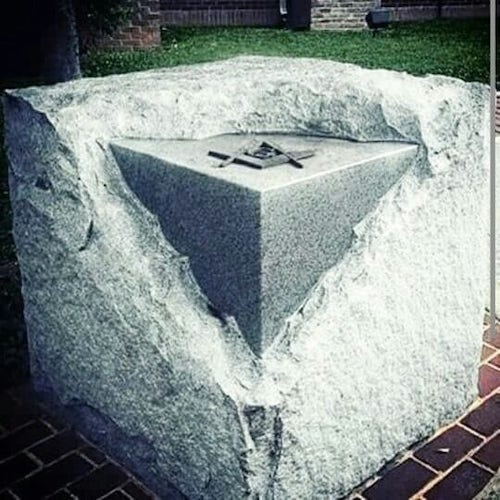
In Freemasonry, there are two types of Ashlars; rough and perfect. Each depicts a different meaning. Operative Masons referred to rough Ashlar as an unprepared stone.
In Speculative Freemasons, rough Ashlar represents a Mason’s life before joining the craft.
It describes someone’s life before becoming enlightened.
Perfect Ashlar portrayed a complete stone that has been thoroughly molded by working tools; a mallet, chisel, gavel, etc.
A stone can only be used in construction after it’s perfectly shaped.
Similarly, perfect ashlars are a symbol of brothers who have undergone extensive masonic teachings and are now focused on leading an upright life.
Masons are taught that no one is born a perfect stone. Through teachings, necessary education, and nurturing of brotherly love, a man can restrict his actions within the circle.
Excellent presentation.
Mr. N . J. McIntyre PO Box 1962 Southport 4215 GC Qld Australia.
very enlightening description of the many symbols and works of Freemasonry. A very good read.
George R Sachs
Past Master
Past District Deputy Grand Master
Grand Lodge of Massachusetts
33°; Scottish Rite Freemasonry, Northern Masonic Jurisdiction
Thank you. The presentation added to my understanding of Freemasonry.
Point within a circle is very interesting to me because I have seen it so many times, especially on google earth in what look to be strange possibly ancient landmarks or ruins. Curious what the lines on either side mean because it would seem to be an important part of the symbol. I’ll be in a rabbit hole on this for a while.
Is there a special meaning to a goat (or what I assume is a goat)? I work in a historic Freemason building from 1911, now turned boutique hotel, and the top floor still has the temple.
Thank you so much for the information it was very important to me than understand the facts
I loved every bit of it. Mentioned we’re some things that I have not been exposed to.
Very good article. Thanks for helping me to understand some of the history and meanings of the symbology.
I have a ring of my father-in-law’s that may or may not be a Masonic ring but I am not finding the symbol in this article. Where/how can I upload a picture of the ring so I can find out. It appears to be a flag or banner inside a triangle with sun rays emanating from it.
Thank you.
What is the benefit for us to become Freemasons?
The Benefits Of Being A Freemason
Thank you very much. I am a Grand Lecture and this is very good information I can use in my training classes.
Thank you very much.
Thanks for this presentation am an aspiring and looking forward to being accepted into one of the lodges in the nearest future, though although am not rich I believe in judging people not by looks but by their potential thanks for this little enlightenment
concur. HDL #107